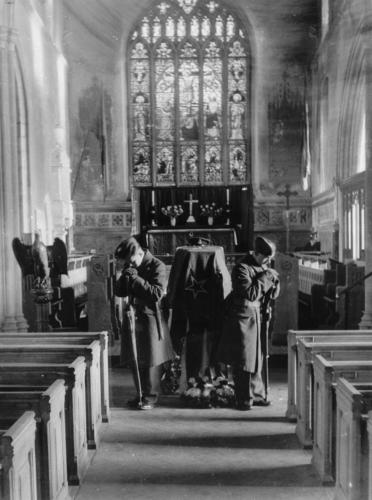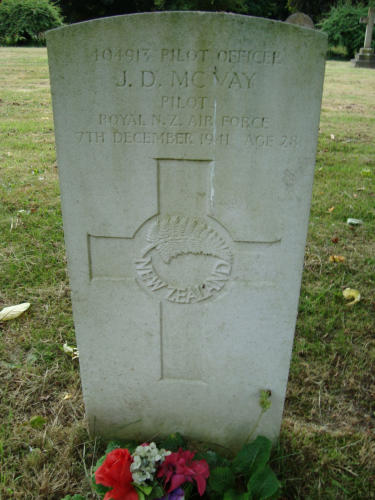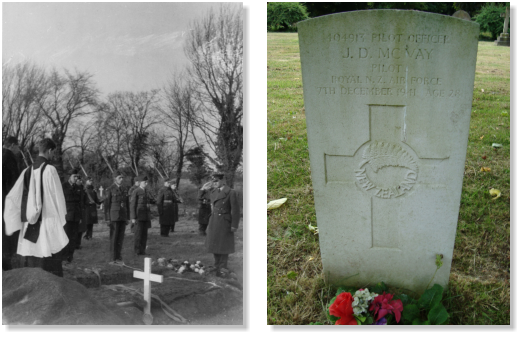

No.3 (Fighter) Squadron At RAF Hunsdon
The
use
of
aeroplanes
for
military
purposes
was
established
in
the
UK
by
the
formation
of
the
Air
Battalion
of
the
Royal
Engineers.
Following
the
issue
of
a
special
Army
Order
dated
the
28th
of
February
1911
the
organisation
was
inaugurated
on
the
1st
of
April
1911
and
comprised
a
Headquarters
at
South
Farnborough
and
two
companies;
No.1
(Airship)
Company
and
No.2
(Aeroplane)
Company
located
at
South
Farnborough
and
Larkhill respectively.
The
creation
of
No.2
(Aeroplane)
Company
of
the
Air
Battalion
stationed
at
Larkhill
marked
the
first
British
formation
of
a
military
unit
composed
entirely of heavier-than-air flying machines.
Training
flights
of
this
newly
created
No.2
(Aeroplane)
Company
continued
including
participation
in
the
Army’s
Autumn
Manoeuvres
of
1911.
Although
these
manoeuvres
were
cancelled
by
the
Army,
ostensibly
due
to
lack
of
water,
No.2
(Aeroplane)
Company
used
the
opportunity
to
exercise
their
planned
deployment.
After
these
manoeuvres,
in
September
1911,
a
small
detachment
of
No.2(Aeroplane)
Company
was
established
at
Farnborough
as
the
‘Aldershot
Station’.
The
‘Diary
of
Squadron
Work’
(November
1911
to
August
1912)
includes
the
transition
from
Air
Battalion,
Royal
Engineers
to
Royal
Flying
Corps
on
13
May
1912
by
re-naming
No.2(Aeroplane)
Company
as
No.3
Squadron
RFC.
On
the
same
day
No.1
(Airship)
Company
became
No.1
Squadron
RFC
and
remained
at
Farnborough
continuing
with
its
Balloons
and
Kites.
No.2
Squadron
RFC
was
also
inaugurated
on
13
May 1912 and ‘formed’ later in May 1912.
From a letter by Air Chief Marshal Sir Robert Brooke-Popham, to the Editor of Flight Magazine; published in March 1949.
“In
about
March
1912,
I
was
seconded
to
the
Air
Battalion
and
told
to
take
command
of
No.2
(Aeroplane)
Company.
That
was
the
only
unit
formation
of
any
sort
that
possessed
aeroplanes.
On
about
May
the
12th
or
15th
No.2
(Aeroplane)
Company
was
given
a
new
name
-
No.3
Squadron,
Royal
Flying Corps, (Military Wing).”
Copyright: No.3(F) Squadron Association (2018) courtesy of Vic Lorriman 3(F) Squadron Assc. Historian
Please Note, these are RNZAF Official copyright photographs.
Commanding Officer Squadron Leader RF 'Digger' Aitken centre
A group of No. 3 Squadron RAF, pilots standing in front of a Hawker Hurricane IIC at RAF Station Hunsdon.
L-R: Sergeant Jack Collins, RWG Emery, Squadron Leader RF Aitken, Commanding Officer, Flight Lieutenant Eddie Berry, Sergeant Johnnie
Scholes, Sergeant Gill, Flight Sergeant Wigglesworth.
Re-arming a 3(F) Squadron Hurricane IIC at RAF Hunsdon. Hurricane of 3(F) displaying the overall black paint scheme
Aircrew of 3(F) squadron relax at Hunsdon.
No. 3 Squadron RAF, pilots standing in front of a Hurricane at RAF Station Hunsdon. L-R: Gill, Collins, Gawith, Dallon, unknown, Wigglesworth,
Moore, unknown, Sqd Ldr Aitken, unknown, Berry, Tow, Emery, MacKichan(?), Davies, Hunt, Inwood, Montgomery.









Wartime Airfields
rjkdesign
Wartime Airfields
rjkdesign


Wartime Airfields
At the start of WWII, No 3 (F) Squadron were equipped with the Hawker Hurricane and as a day fighter squadron were sent to France during the
latter part of the period of the German invasion of the Low Countries and France. In ten days of fighting the squadron was almost decimated and
returned to Britain as the French defence started to crumble and the British Expeditionary Force (BEF) withdrew to Dunkirk. They were sent to
Scotland to re-equip and a nucleus of pilots formed 232 Squadon. 3(F) squadron took over the air defence of Scapa Flow, Britain's largest Royal
Naval base. In 1941 3(F) were designated as a Night Fighter Squadron and moved south to the newly built airfield of RAF Hunsdon where they
joined another famous Hurricane squadron No 85, who were a day fighter squadron who also had seen intensive action in France.
No 85 had been similarly re mustered as a Night Fighter Squadron, and was now flying twin engine Douglas Boston night fighters from Hunsdon.
3(F) squadron operated Hurricane MkIIC fighters, some in an overall night fighter black paint scheme. These aircraft were armed with four 20 mm
Hispano Cannons and sometimes fitted with long range tanks and according to the Station ORB flew some of the early intruder raids into France in
1941 attacking road convoys , shipping and any other targets of opportunity. 3(F) Squadron also provided aircraft to accompany 1451 (Turbinlight)
Flight also at Hunsdon on their early foray into their rather unusual method of night fighting (See Hunsdon History on this site for details) 3(F)
remained at Hunsdon until early 1943, by this time now equipped with another Hawker design the Typhoon . Due to leave Hunsdon sometime on the
5th May 1943 to relocate to RAF West Malling in Kent, They had made discreet enquiries as to the timing of the upcoming visit of the Air Officer
Commanding of No 11 Group Fighter Command, Air Vice Marshall H.W.L 'Dingbat' Saunders who was going to visit on the 5th May to present 85
Squadron with their official crest.
The personnel of 85 Squadron were drawn up on parade and had formed on three sides with the Air Officer Commanding in the middle on a dias
and about to give his speech. From their nearby dispersals and watching, 3(F) squadron fired their Kaufman cartridge starters, an apparently very
raucus and shattering noise, even if you were prepared for it, and slowly taxied out to the runway where they took off one by one drowning out the
speaking Air Officer Commanding, only his mouth could be seen moving and it is doubtful anyone heard his words over the noise of the squadrons
2200 HP 24 cylinder Napier Sabre engines as they departed and then carried out a squadron strength low pass over the proceedings.
Please Note, these are RNZAF Official copyright photographs
A Guard of honour standing guard over the coffin of Pilot Officer John Douglas McVay, RNZAF, inside the Ware new parish church, Watton Road, Ware
.
Pilot Officer JD McVay, NZ404913, crashed in his No. 3 Squadron Hurricane at Rye Hall Road near Thornwood Common after hitting a tree on the night
of 7 December 1941, when returning to RAF Station Hunsdon after an offensive patrol.
Guard of honour and priest at the grave of Pilot Officer John Douglas McVay in the cemetery of Ware parish church.
Now recognisable by the Commonwealth War Graves headstone to mark his grave.
Wartime Airfields


3(F) Fighter Squadron At Hunsdon
The
use
of
aeroplanes
for
military
purposes
was
established
in
the
UK
by
the
formation
of
the
Air
Battalion
of
the
Royal
Engineers.
Following
the
issue
of
a
special
Army
Order
dated
the
28th
of
February
1911
the
organisation
was
inaugurated
on
the
1st
of
April
1911
and
comprised
a
Headquarters
at
South
Farnborough
and
two
companies;
No.1
(Airship)
Company
and
No.2
(Aeroplane)
Company
located
at
South
Farnborough and Larkhill respectively.
Commanding Officer Squadron Leader RF 'Digger' Aitken centre
A group of No. 3 Squadron RAF, pilots standing in front of a Hawker
Hurricane IIC at RAF Station Hunsdon.
L-R: Sergeant Jack Collins, RWG Emery, Squadron Leader RF Aitken,
Commanding Officer, Flight Lieutenant Eddie Berry, Sergeant Johnnie
Scholes, Sergeant Gill, Flight Sergeant Wigglesworth.





rjkdesign













